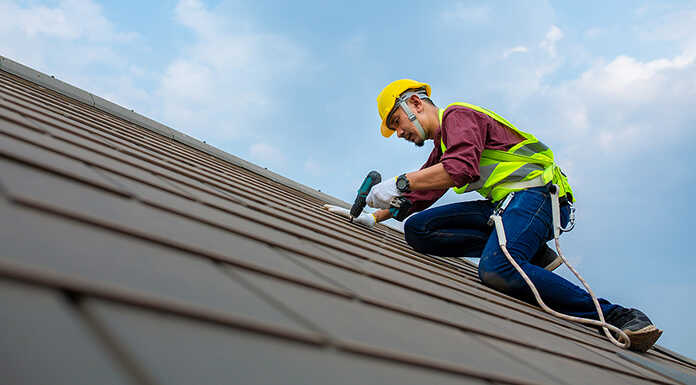In 2019, the Bureau of Labor Statistics reported 1,061 construction workers died on the job, with 38% of those fatalities resulting from falls. Events surrounding these accidents often involve several factors, including unstable work surfaces, misuse of fall protection equipment, and human error. Studies have shown that using guardrails, fall arrest systems, safety nets, covers, and travel restriction systems can prevent many deaths and injuries at work resulting from falls.
OHSA Fall Protection Requirements
Employers must have proper working conditions set up to prevent employees from falling off of overhead platforms, elevated workstations, or into holes in the floor and walls. OSHA requires that fall protection solutions be provided at elevations of four feet in general industry workplaces, five feet in shipyards, six feet in the construction industry, and eight feet in longshoring operations. In addition, OSHA requires that fall protection be provided when working over dangerous equipment and machinery, regardless of the fall distance.
Falls can be deadly, but they are preventable if you have a plan. Companies can prevent falls from heights at their worksites by following an 8-step approach to fall protection:
- Ensure working surfaces are structurally safe. Does the walking/working surface have the strength and structural integrity to safely support all employees and their equipment? Employees should not be permitted to work on building roofs and other walking/working surfaces until the employer has determined that the surfaces are structurally sound.
- Conduct fall hazard assessment. All fall hazards, even potential fall hazards, must be assessed before appropriate corrective measures are considered. In addition, a fall hazard assessment can also determine training needs and fall rescue methods.
- Eliminate the need for fall protection. Options include redesigning the process or job task, working at lower heights, using tool extensions to work from ground level, and designing buildings and other walking/working surfaces to eliminate/reduce exposure.
- Select the appropriate type of fall protection system. A fall protection system refers to equipment designed to control fall hazards. All fall protection systems either prevent a fall from occurring or safely arrest a fall.
- Develop rescue/retrieval procedures. OSHA states, “The employer shall provide for prompt rescue of employees in the event of a fall or shall assure that employees are able to rescue themselves.” Workers must be made aware that if they are exposed to fall hazards, they also will be provided with a means to be rescued or rescue themselves. The recommended goal for rescue subject contact is less than six minutes, per ANSI Z359.2-6.1. Options include self-rescue, assisted rescue, and assisted rescue with an aerial lift.
- Develop an equipment inspection, maintenance, and storage program. All fall protection equipment, including safety harnesses, lanyards, and other connectors, must be visually inspected before each use.
- Provide fall protection training. Train employees to recognize fall hazards and the procedures they need to follow to minimize these hazards and other injuries on the job.
- Monitor your fall protection program. Continuously monitor the program’s effectiveness to ensure that supervisors and employees at the job site follow the required elements to avoid injury in the workplace.
In a nutshell…
- Falls are an all too common workplace injury and constitute more than 1/3 of all construction fatalities.
- OSHA standards include requirements for guarding floor and wall openings, holes, industrial stairs, and ladders.
- The 8-step fall prevention plan begins with assessing all fall hazards and follows with implementing appropriate active and passive systems, training, and monitoring for effectiveness.

















